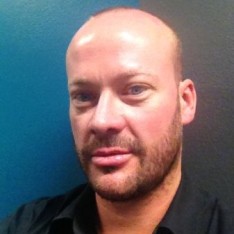Q&A with Red Guerilla’s Nigel Hickey: ‘If the client doesn’t feel uncomfortable then it’s probably fairly average work’
 The head of the Red Agency’s experiential arm Red Guerilla Nigel Hickey talks to Miranda Ward about the possibilities of experiential marketing, how clients need to be scared of what they are doing, and how the discipline fits into the PR space.
The head of the Red Agency’s experiential arm Red Guerilla Nigel Hickey talks to Miranda Ward about the possibilities of experiential marketing, how clients need to be scared of what they are doing, and how the discipline fits into the PR space.
How do you define experiential?
I always take the approach of brand experience. Experiences can be driven across multiple different platforms now. Really if it’s on or offline it’s about getting someone to engage with a brand and getting them to understand what that brand is about and experience it. It’s also about giving them conversation topics that they can share socially or talk about.
All those types of things are about getting to experience what the brand is.


Quote: “If the client doesn’t feel uncomfortable then it’s probably fairly average work. You want them to be concerned. You want it to be a high-risk project…”
Respectfully disagree. This is based on the premise that the ‘agency’s idea’ is right.
Maybe it isn’t. Maybe the client has every right to feel uncomfortable.
And if you want high-risk then take some risk – like ‘if it doesn’t work, you don’t get paid’.
Maybe the agency should feel a little ‘uncomfortable’ every now and again?
Like many have said before me – ‘its easy to be brave with other people’s money’.
Couldn’t agree more ‘Brave with other people’s money’.
So bored of seeing industry nobodies trot out the tired mantra of clients need to be braver, clients should feel uncomfortable etc. etc.
Maybe they should, but there are also lots of clients who are taking risks and getting rewarded.
Either way, who is Nigel Hickey to lecture them? What has he ever done?
Work in the industry for 20+ years, do some extraordinary work and then tell us what you think. Until then, get back to your desk and keep your head down.
In my opinion, If the client feels uncomfortable then at best the idea hasn’t been explained well enough, or at worst it’s the wrong idea.
There’s normally a reason for the hesitation – find it and deal with it. then amazing work can happen without the client feeling uncomfortable.
PS Great to see an agency head listing a lot of other agencies work as excellent. Nice to see.
There are some good opinions out there, but while we are talking about being brave, “I’m with Brave”, anonymously putting people down isn’t very brave at all.